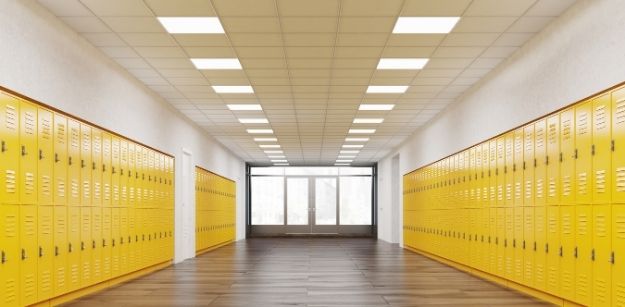There’s a lot to keep track of in a school every day. The post-COVID 19 routines and new health requirements only add to the list. The new regulations make it hard for school facility managers to control maintenance services.
One way to stay focused is to track and review Key Performance Indicators (KPIs), values that demonstrate how effectively your team achieves its objectives. There are many processes, so being up to date on everything that happens on the school premises without the help of computerized maintenance management system (CMMS) software can be challenging. A facility management software for schools can help you track standard maintenance KPIs.

1. Planned vs. Unplanned Maintenance
All facilities require maintenance. Planned maintenance covers more extensive situations or long-term problems like locks, pipes, and furniture. This prevents them from evolving and requiring unplanned, more costly, and time-consuming servicing.
A CMMS software can help you track planned and unplanned maintenance. The interface allows you to send work orders in an organized manner and easily track them before, during, and after the service is complete. The data gathered by the system allows you to track how much unplanned maintenance was performed and all the hours required from your crew. A healthy percentage of planned maintenance is 80 to 90 percent and between 10 to 20 percent for unplanned maintenance.
2. Maintenance Cost Variance
One of the main reasons to track maintenance data is better budgeting. When done correctly, planned maintenance can reduce or eliminate the need for unplanned or emergency repairs. Inadequate planned maintenance can severely impact your annual budget.
The formula to calculate maintenance cost variance involves comparing the budgeted maintenance cost to the actual cost at the end of a specific period. A facility management software for schools helps track unexpected costs alongside unplanned maintenance to determine a more accurate budget, allocating resources reflective of your actual needs.
3. Time Working on Equipment
In any facility, there are slower times when technicians are not dedicated to actively repairing anything. Track this time to make sure your employees are effectively allocating their time. Also, track repairs, as this can show other trends and ensure all equipment is updated.
Before implementing a plan, it’s typical for unproductive staff time to reach 70 percent. By monitoring this KPI more carefully, you will find out how much time is spent repairing specific equipment and what items or services require the most time. CMMS software also gathers information about who is doing which job so that you can find out which employees are most useful, productive, and qualified for each job.
4. Average Time to Repair
This KPI shows the pace at which your technicians are working. It measures how much time it takes to get a repair done once a work order is filed and can help you schedule maintenance services more effectively. The formula for determining the average time of repair is obtained by dividing the total maintenance time by the number of repairs. As schools involve many different factors, you should monitor different categories (for example, landscaping, electric, plumbing) to determine how different departments operate in your facility.
5. Student Performance
Schools should also keep an eye on student performance. A recent study shows the learning environment plays a significant role in student success and can influence achievement or failure in the school year. The whole point of maintenance is to optimize the learning environment, so teachers work effectively and students learn better. If this is not the case, the school’s infrastructure may play a role in the performance indexes.
It’s best to stay updated on recent test scores, classroom experience reports, and other performance data. Sometimes it is possible to correlate the results with what was happening in the facility: noisy services compromising attention in the library, lights failing in a classroom and broken air conditioning. These statistics show where your crew can improve.
Track Your Performance To Get an A+
In the past, student performance was related only to what the teacher did in the classroom. Today, school conditions are already seen as a determining factor in the learning process. As a school facilities manager, your job is to ensure a safe infrastructure for students, teachers, and the entire faculty.
It can be difficult, especially in older buildings that require routine care. Consider CMMS software to make your life and your team’s performance more straightforward and organized. As the primary building maintenance coordinator, your job will be that much easier.